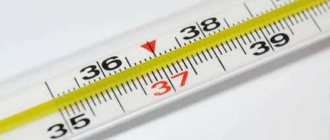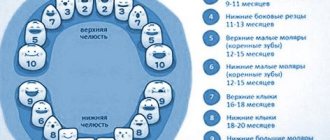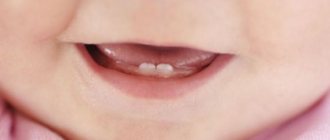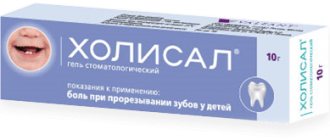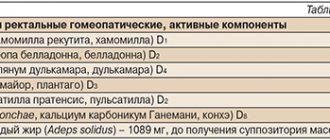Make an appointment by phone: +7 (343) 355-56-57
+7
- About the disease
- Cost of services
- Sign up
- About the disease
- Prices
- Sign up
A child’s temperature is a protective reaction that helps fight the disease. But it does not determine the cause of the disease and rarely helps to make an accurate diagnosis. However, understanding where this symptom comes from will help parents and doctors properly help a child of any age.
How to measure temperature correctly
Before giving your daughter or son any medicine, you should make sure that the temperature has actually risen.
Thermometers help measure it, so they should be in your home medicine cabinet. The following methods can be used:
- 1. Use a regular glass mercury thermometer. And although this method is considered not fashionable today, it shows the most accurate numbers.
- 2. An ear thermometer is a good device for very young children, since you can get the result in just a few seconds, and no contact with the skin is required.
- 3. Digital ones are not as accurate as classic ones, but they are especially popular with parents of all ages.
- 4. Frontal ones are most often found in large clinics. This is very rare in home practice.
- 5. Thermometer - the pacifier will be an ideal assistant for mothers and fathers if the child is not yet a year old.
Each of the presented options works differently. Therefore, before you start using it, you should read the instructions.
Why does the temperature rise?
The exact mechanisms behind the temperature increase are still being studied. However, we can say that this is one of the protective processes in the body that develops under the direct or indirect influence of certain irritants (pyrogens) on the thermoregulation center.
Pyrogenic substances are divided into two categories:
- Endogenous (internal or leukocyte) - act directly on the center of heat exchange regulation, associated with immune cells - neutrophils, macrophages, eosinophils.
- Exogenous (coming from the outside) - under their action, endogenous pyrogens are produced; they can be of a bacterial (viruses, bacteria, fungi) and non-bacterial nature (some drugs, hormones, bile acids, allergens).
Under what conditions does body temperature increase:
- The thermoregulation center in the hypothalamus is irritated.
- There is an imbalance between heat production and heat transfer.
- The body's ability to adequately transfer heat is impaired.
The most common cause of fever is infection. It accounts for up to 75% of all cases of fever. This is one of the measures that the body takes to cope with the causative agent of the disease. In some cases, fever may be a manifestation of non-infectious inflammatory diseases, heat stroke, or a post-vaccination reaction.
Reasons for the increase
A child does not develop a high temperature without a reason.
However, it is very difficult for parents to find the cause at home. It is for this reason that it is advisable to show the baby to the pediatrician. The most common reasons are:
- 1. Colds and viral diseases.
- 2. Intestinal infections.
- 3. Inflammatory diseases of internal organs.
- 4. Pneumonia and other lung diseases.
- 5. Inflammation of the ears, especially otitis media.
- 6. Sore throat.
At the same time, parents need to understand what a normal temperature value is. The average human body temperature remains at 36.6 – 36.9 degrees. Anything below this figure is called hypothermia. Anything higher is hyperthermia. This indicator is also classified according to another scale, which is often used by doctors.
Low-grade fever is in the range of 37 – 37.9. This is followed by febrile, which starts from 38 and ends at 38.9. If there are higher numbers on the thermometer, then it is already paretic, and above 41 degrees is called hyperpyretic.
Temperature control
Experts say that during the period of teething in children, it is necessary to control the increase in temperature. At the same time, they assure that a rise in temperature above 38 degrees indicates an infection that has settled in the baby’s body, which means that the help of a doctor is required who can make the right prescriptions. A rise in temperature to 37-37.5 degrees can be caused precisely by teething, but even at this temperature the baby is often capricious: he eats poorly, cries, and cannot sleep. To relieve your child of painful symptoms, it is important to know what methods can be used.
Is immunity really developed?
There is no consensus on this matter.
It is believed that high temperature is the body’s response to the penetration of viruses, microbes, and bacteria into it. And the pyretic mechanism, which turns on at this moment, helps to literally “fry” all these harmful strangers. When are antipyretic medications needed? Many pediatricians advise parents to do the following - if the baby has a fever, and he tolerates it quite well, continues to do his work, plays and does not experience weakness - then antipyretics should not be given up to the maximum limit of 38.5 degrees.
If the baby is literally lying flat, and in previous cases of hyperthermia he had convulsions or vomiting, then the medicine must be given, and not wait for the number 38.5 on the thermometer.
Komarovsky: how to create better conditions for teething
We must proceed from the fact that the child during such a period urgently needs the help of his parents. When teething, Komarovsky calls a child’s temperature not a very dangerous phenomenon. But this is only true if the temperature does not reach particularly high levels. The latter situation cannot be avoided without the intervention of a doctor. In other cases, Komarovsky recommends giving up medications and following such advice.
- While teething is in progress, you need to take your baby for frequent walks. Moreover, it is better to take the baby out not in a stroller, but in a sling or a special backpack. This will provide the child with the contact with his mother that he incredibly needs.
- Playing with your baby during teething is also very important. If the temperature does not reach +38.5°C from simple games that do not involve serious expenditure of effort, there will definitely be no harm. This will help distract the child from unpleasant sensations.
- High temperatures always lead to rapid dehydration. Therefore, the child should be constantly provided with a sufficient amount of liquid, and also wiped with a damp swab or rag.
- Komarovsky also emphasizes that it is necessary to monitor the general temperature regime. The child should not be dressed in clothes that are too warm. And the temperature in the room should be maintained at a level of more than +18°C, but less than +25°C.
By following Komarovsky’s recommendations, you will be able to make the teething process less painful for your child. But do not forget that too high a temperature is a reason to call an ambulance. This cannot be put off.
Maximum allowed values
Today there is no exact understanding of what temperature is dangerous for a child.
It all depends on how the baby feels. However, if numbers above 38.5 appear on the thermometer, then you should definitely give medicine. An ambulance should be called when the numbers are 39 and above. If a child’s temperature does not go down after taking antipyretics, then what to do? You should definitely call a doctor at home or go to the clinic to determine the exact cause of this condition, which is incomprehensible to parents.
Why do babies have a fever when teething?
Before a tooth is visually visible to us, it goes through a certain path: first through the bone tissue, and then through the gum.
The process itself is quite painful for the baby, the gums itch and swell. An inflamed area forms in the tooth eruption area, and the baby’s immunity sharply decreases. Against this background, the child experiences an increase in temperature. During the period when the first teeth appear, the baby begins to salivate profusely. This is how the child’s body turns on natural protection against possible infection during an active inflammatory process. Saliva, in composition, is a natural anti-inflammatory agent, abundantly washing the baby’s gums.
The baby's teething temperature is usually 37 - 37.7 degrees. There is no point in fighting such a temperature; the body has turned on its protective functions. Your task is to carefully monitor the condition of the baby so that the temperature does not exceed 38 degrees, do not wrap the child up again. There are situations when the baby’s temperature reaches 38-39 degrees.
It is important to monitor the thermometer readings every hour, especially in the evening the temperature can rise sharply. If antipyretic drugs and rubbing do not help, that is, an hour has passed after using the product, and the temperature has not dropped even by 1-2 degrees, then immediately call a doctor. And at temperatures above 39.2 degrees, it is better to immediately call emergency services.
How to reduce a child’s temperature with medications - tablets, syrups
Today one of the most popular drugs is Nurofen.
It is available in the form of syrup, capsules and rectal suppositories. For each age, you can choose your own option to safely and painlessly give medicine to your baby. Paracetamol, which can be found in the pharmacy in the form of tablets or syrup, has a good effect.
Some parents use ibuprofen, which is recommended for acute inflammatory diseases, teething and other pathological conditions, starting from 6 months.
How many days does a baby's fever last during teething?
Typically, fever during teething lasts for 1 to 3 days.
On the 4th day, the temperature should begin to subside. If the process takes longer, be sure to invite your treating pediatrician. This is necessary to accurately determine the cause of the fever. Many parents believe that a temperature of 38 - 39 degrees is normal when the first teeth appear, but in fact, the baby develops some kind of infection along with the teeth. The pediatrician diagnoses the cause of fever and malaise.
Don’t be afraid to be suspicious and overly anxious; invite a specialist on the very first day of high fever. Don't risk your baby's health.
How else can you help your body cope with the disease?
Since fever most often occurs during acute respiratory illnesses, there are ways to help the body cope with the infection faster. One of these agents is the immunomodulator IRS®19. This is a drug that contains a mixture of bacterial lysates (fragments of microbial cells) that most often cause respiratory infections.
Lysates cannot cause disease, but stimulate the immune system (that is, they cause an accelerated response of both specific and nonspecific immunity factors, especially local ones). Specific factors include the production of antibodies that bind to a specific antigen, destroy it and remove it from the source of infection. Nonspecific factors are lysozyme, interferons, phagocyte cells, which equally protect against any foreign agents that penetrate the mucosa.
IRS®19 is available as a nasal spray. The drug is prescribed from the first day of illness and for the prevention of acute respiratory infections (ARI) in adults and children from 3 months. For children under 3 years old, it is enough to inject one dose of the drug into each nasal passage twice a day, for children over 3 years old - one dose 2-5 times a day until the symptoms of the disease disappear.
How to bring down the temperature?
So, at a body temperature of up to 38-38.5 ° C, it is necessary to help the body balance heat production and heat transfer. To do this, it is enough to provide cool, moist air (up to 18 ° C in the room), warm, dry clothes and plenty of fluids.
For higher temperatures or unfavorable symptoms, antipyretic drugs such as ibuprofen, paracetamol in the form of syrup, suppositories or tablets are prescribed. Rubbing with lukewarm water is recommended at least 30 minutes after taking an antipyretic to prevent chills, which will lead to a rise in temperature again.
Antipyretic drugs are used only as needed, that is, taking the next dose is possible only when the temperature rises again to high values. In this case, it is necessary to observe the time interval and age-specific dose of the medicine. They are especially carefully prescribed to children who take antibiotics, as it becomes more difficult to assess the effectiveness of therapy.
Why is temperature beneficial?
- All biological, especially immune processes are activated. Pathogens lose their ability to reproduce and die.
- Protective reactions are stimulated - the rate of production of antibodies and interferons - internal antiviral agents - increases.
- The neutralization of toxins in the liver is activated.
- The elimination of urine, and with it toxins, is accelerated.
The most favorable temperature range for infections is considered to be 38-39 °C. With this course of the disease, it is enough to ensure that heat transfer corresponds to heat production. This is evidenced by the child’s relatively normal state of health: his skin is pink, warm and moist to the touch. Reducing the temperature is not recommended. Then the body can cope with the infection in the shortest possible time.
